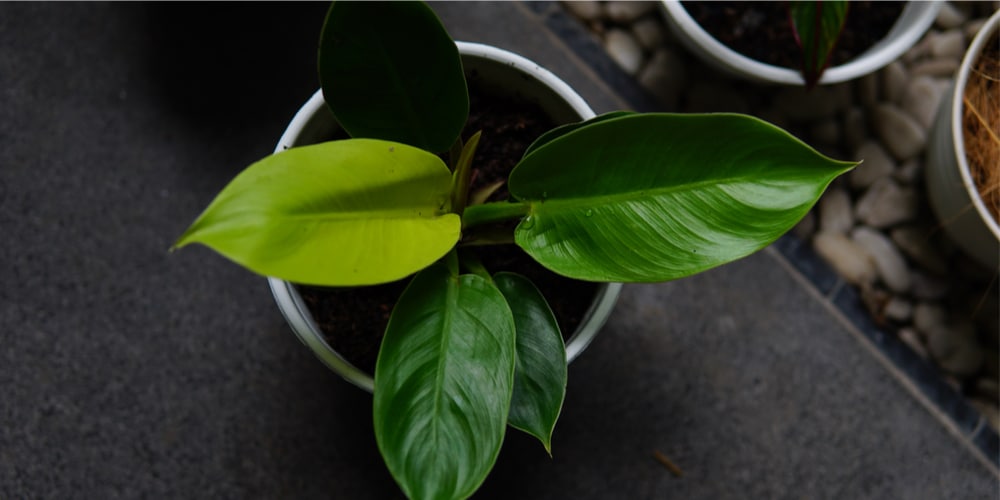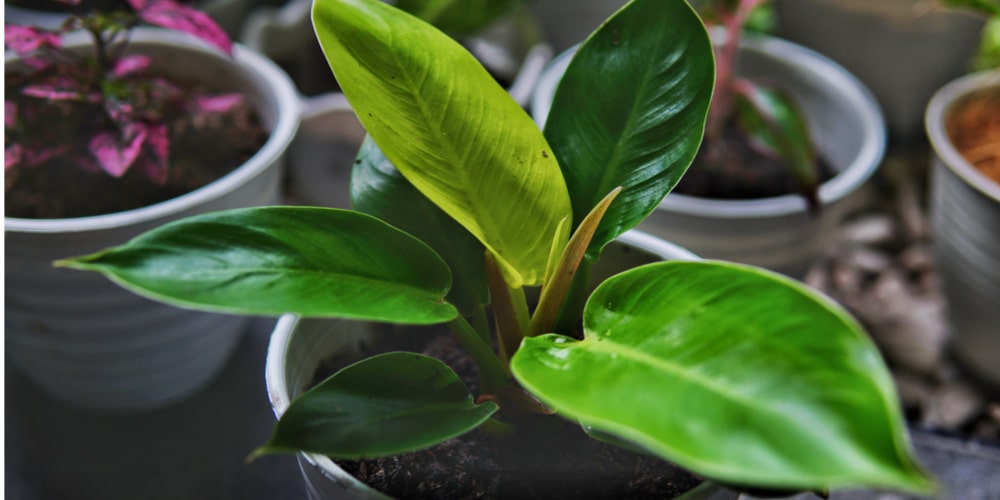Moonlight philodendron is a low-growing shrub that has lovely light green leaves. These plants are commonly grown as houseplants for their beautiful foliage and ease of care. They can also be grown outdoors in USDA zones 9 to 11.
Moonlight philodendrons are native to the tropical jungles of South America, where they grow on the forest floor. This means that they like dabbled light and can cope with more shade than other varieties of philodendron. They do, however, grow well in bright indirect sunlight. Let’s look at how to grow and care for a moonlight philodendron.
What is a Moonlight Philodendron?
Moonlight philodendrons are part of the Araceae family which has over 400 varieties of plants. They have lovely light green to yellow leaves, which darken as they mature. The moonlight philodendron is a reasonably low-growing plant that populates the rainforest floors. It can grow up to 24 inches in height and can spread to about 26 inches wide.
The plant’s foliage gets rougher as the leaves age, and the veins also become more prominent. Leaves grow up to six inches in length. These plants flower with an attractive white flower in the spring and summer months. The flowers are generally long-lasting, look great, and will make your home look lovely for about 4 to 6 weeks.
Moonlight philodendrons are popular houseplants that can be grown outside in the right climate. They are toxic to humans and animals if ingested. The sap can also irritate the skin or, if swallowed (which is unlikely since it tastes extremely bitter). Keep your philodendron on a high shelf out of the reach of pets and children. When growing philodendrons outdoor, ensure that they won’t be eaten by a horse, cattle, or other livestock.
How do I care for a Moonlight Philodendron?
The moonlight philodendron likes bright light but not full sunlight, so place it in an eastern-facing window. It also prefers temperatures above 60 degrees Fahrenheit and grows best when humidity is kept at around 50%. Water weekly or as needed to keep the soil evenly moist. These plants are relatively easy to care for and are the perfect choice for beginners. Here are some tips to help you grow a thriving moonlight philodendron:
Sunlight needs
Moonlight philodendrons do best when placed in bright, indirect sunlight or filtered light. They can cope with some shade but shouldn’t be left in a room that gets no sunlight. These plants grow well near a window or can be grown under artificial lights indoors. Dabbled morning sun is best for these plants. Don’t leave your plant in the full sun, or its foliage will be burnt by the sun’s UV rays.
As the moonlight philodendron grows on the forest floors, they are overshadowed by larger trees. This means they can cope with some shade but require dabbled light and indirect light for at least three hours a day.
Water Requirements
Keep soil moist, but don’t let your plant stand in water. You can check whether your plant needs watering by testing the first two inches of the soil. Be careful not to overwater your plant, or the roots will start to rot. Signs of root rot include dropping leaves, soggy ground, and the presence of mold.
If you’ve overwatered your plant, you can remove it from its pot, cut back any black and soggy root and treat it with a fungicide. Then repot the plant using completely new soil and a new pot. Don’t reuse the soil as it will infect other plants.
Most people find that their moonlight philodendron needs to be watered between one and three times a week during the growing season. You can reduce watering slightly in the fall and winter but don’t completely neglect your plant.
Pests
Philodendrons are fairly pest-resistant plants but are sometimes affected by sap-sucking insects. Insecticidal soap can kill aphids, mealybugs, and spider mites if applied to the plant every 7 to 10 days. If there is a bad infestation, you may need multiple applications before they are all gone.
Temperature
Moonlight philodendrons thrive when the temperature is at 60 degrees Fahrenheit or higher. Don’t leave your plant outdoors in the fall or winter if you live in an area that’s likely to get frost, as very low temperatures can kill your plant.
Soil
Moonlight philodendron prefers soil that’s loose and fast draining. You can use a tropical pre-mix or make your own soil by adding perlite and peat moss to a standard house plant soil. Philodendrons like soil that’s neutral or slightly acidic. A soil with a pH range of between 5.0 and 7.0 is ideal.
Fertilization
You can fertilize your moonlight philodendron monthly from spring through fall but use fertilizer at half strength since the plants are slow growers. These plants don’t need to be fertilized in the winter as they will become dormant.
Pruning
Trim back the vines once a year to keep the plant compact. You can remove leaves that are damaged or have died.
Humidity
Moonlight philodendrons prefer a humid environment and will die if the leaves are allowed to dry out for too long. Aim to create a humidity of at least 50% for tropical plants. You can increase humidity in the area surrounding your philodendron by grouping tropical plants. Place a tray with pebbles and water underneath your plant; as the water evaporates, it will provide your plant with moisture.
Alternatively, keep your plant in the bathroom or kitchen as these rooms are naturally more humid. Your plant will like being in the steam from a shower. If you have a lot of tropical plants, you may want to invest in a humidifier.
Conclusion
Moonlight philodendrons are well suited to both indoor and outdoor growth, provided it gets plenty of sunlight and water. You can trim off any brown or dead leaves and fertilize regularly during the growing season with a standard houseplant fertilizer mixed at half strength. Aim to provide humidity of around 50% by misting its foliage once per day in hot weather. During the winter, keep the plant away from cold drafts and protect it from heating vents.
Related:

